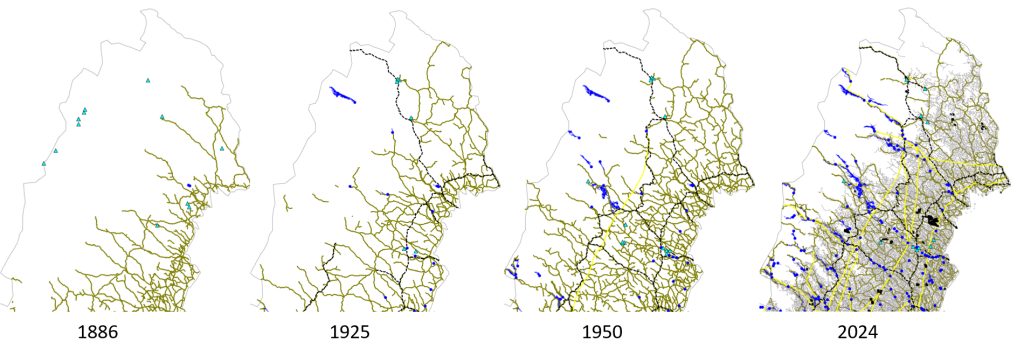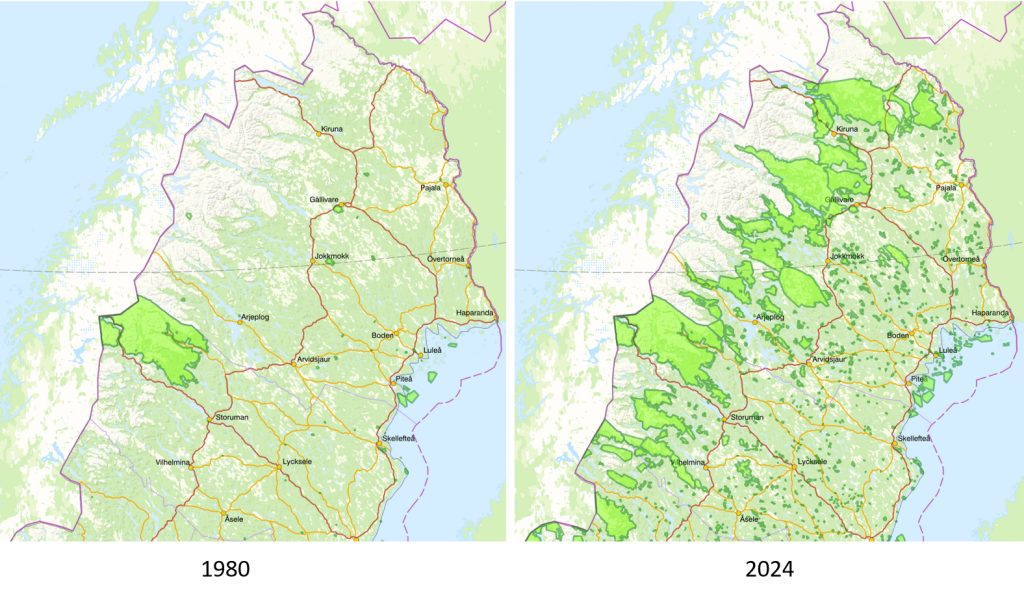The LANDPATHS sub-project Mountain Landscapes revolves around a literature study on the Swedish state’s attempts to create multifunctional mountain landscapes. The starting point is the Environmental Quality Objectives for the mountains, which emphasizes that a pasture-based mountain landscape depends on reindeer, and that reindeer depend on winter grazing in the forested areas. Below, researcher Stefan Sandström (SLU) tells us what we have learned so far about the state’s actions by looking back in history.
Regulation of conflicting interests through legislation
Preliminary results of the literature study show that the Swedish state has long grappled with the issue of planning for different interests and claims to land at the landscape level. The solution for landscape planning has often been through the implementation of new legislation. To some extent, this would solve conflicts of interest between different land use interests, and in other ways counteract undesired consequences of previous decisions. There are examples of such legislation that are over 100 years old. The Reindeer Grazing Act was introduced in 1886, at the same time as the introduction of private land ownership rights in the form of division of land and land consolidation was in its final phase. The Reindeer Grazing Act was supposed to be a tool for regulating the then opposing interests of reindeer husbandry and agriculture, but that was not the case in practice. Since then, the state has continued to try to reconcile these opposing interests, and new interests have emerged over time.
Complexity of interests and state organization complicate landscape planning
Early attempts to create multifunctional landscapes were based on different strategies. In some cases, it was believed that different interests could co-exist, while in others that certain interests could tolerate a certain degree of intrusion/restriction. It was also suggested that land use interests can be separated in time and space, in some contexts. Initially, land use interests were few and manageable. But as time has passed, the interests have become more numerous and harder to oversee.

At the same time, sustainability aspects have consistently shown a negative trend, especially regarding biodiversity, which the state has partially tried to counteract by establishing nature reserves since 1964.

An obstacle to state landscape planning is that it has long been divided into sectors in which different authorities deal with their own topics separately in so-called ’silos’. This makes it difficult to oversee the cumulative effects that occur when many interests operate within the same landscape.
Persistent conflicts in mountain landscapes have become a legal issue
The original research question in the project has now become a legal issue. For the mountain area, this concerns hunting and fishing rights currently being investigated through the work of the state-led Committee on Reindeer Lands. Here, hunting interests are colliding with reindeer husbandry interests, and the issue has also taken on a political dimension with political parties taking different positions on the issue. In addition, a land conflict has recently arisen in the forested areas between Boden and Luleå, where landowners are questioning whether reindeer husbandry rights apply to their properties and whether reindeer grazing should be prohibited. Both of these conflicts have clear origins from conflicts that were supposed to be resolved with the first Reindeer Grazing Act of 1886.
